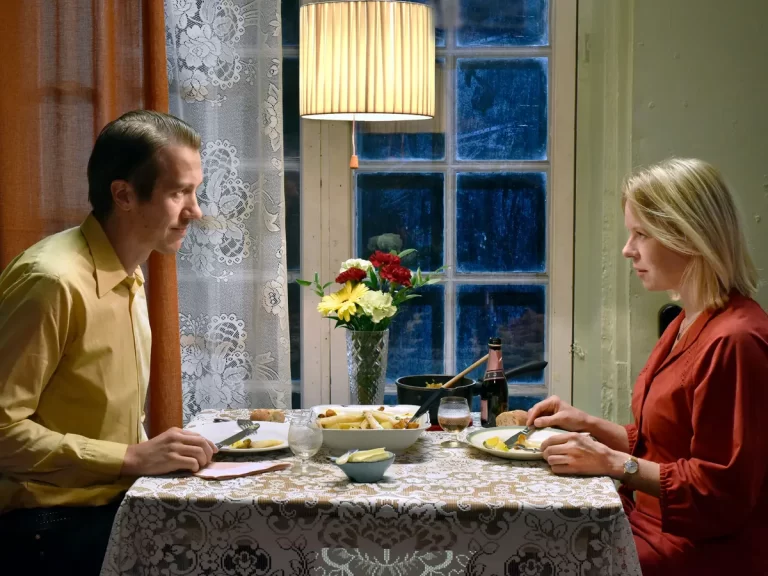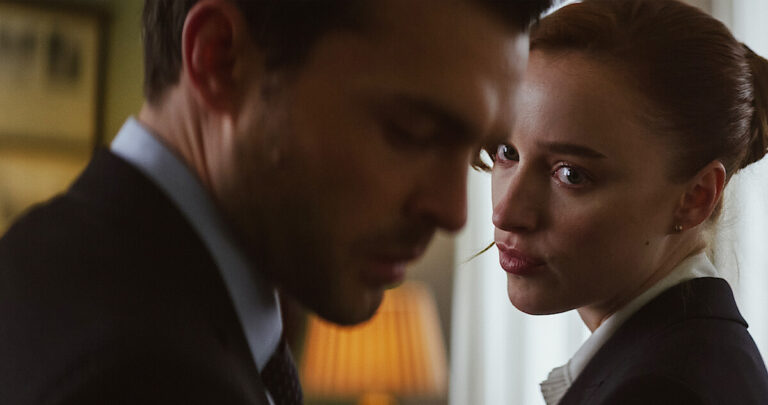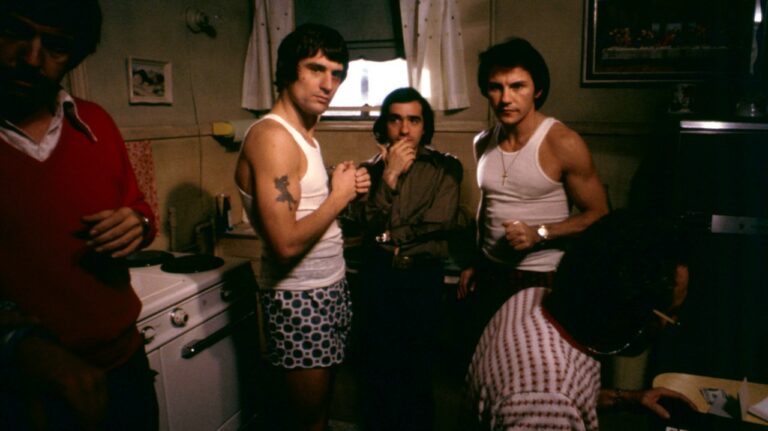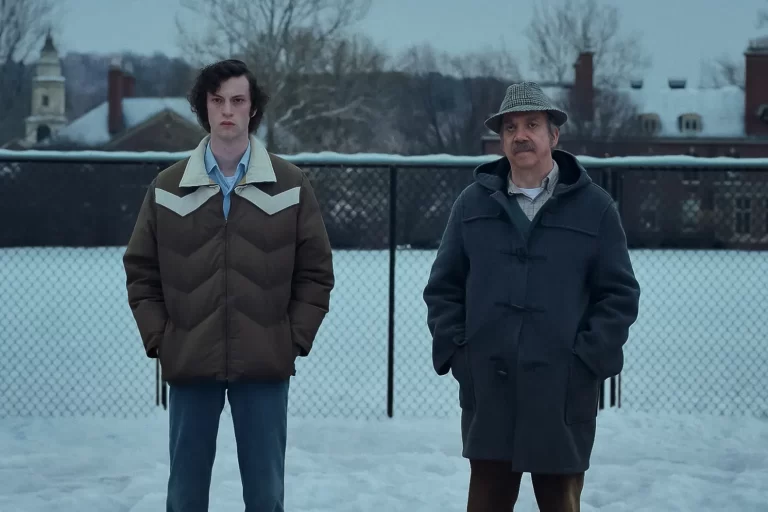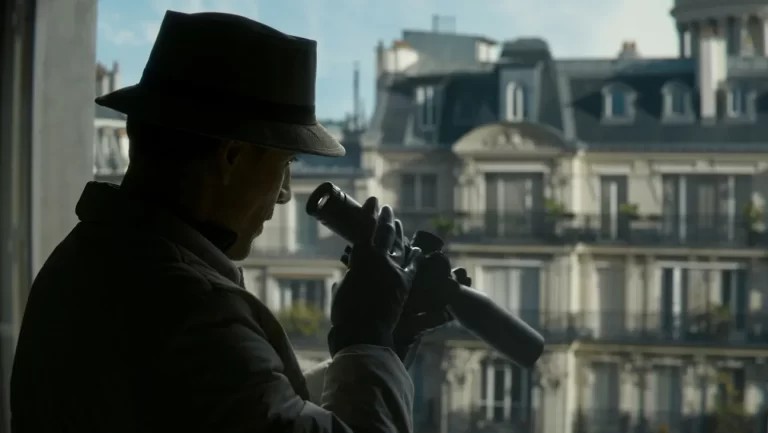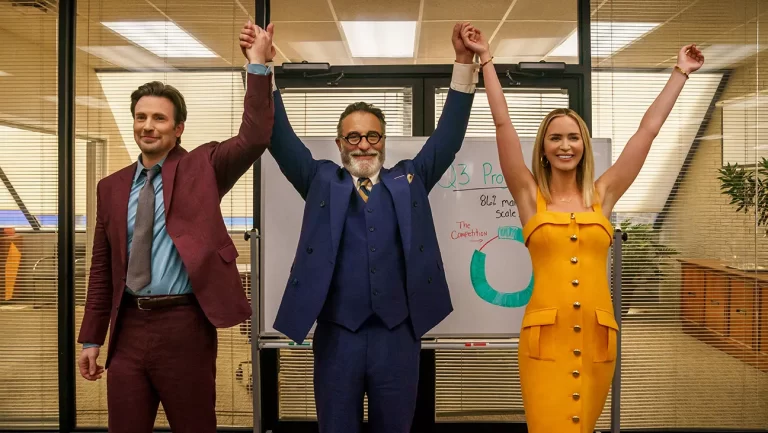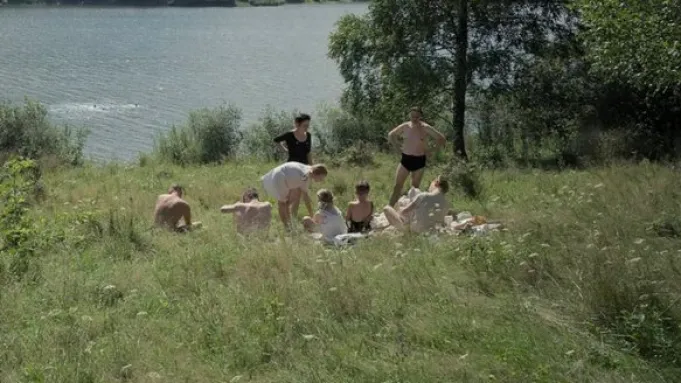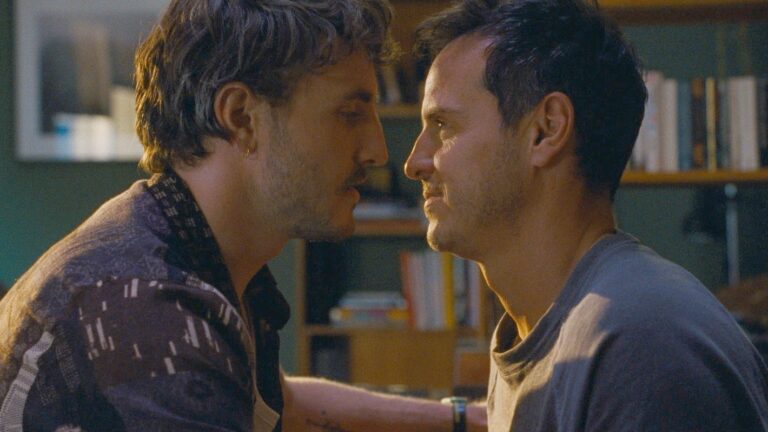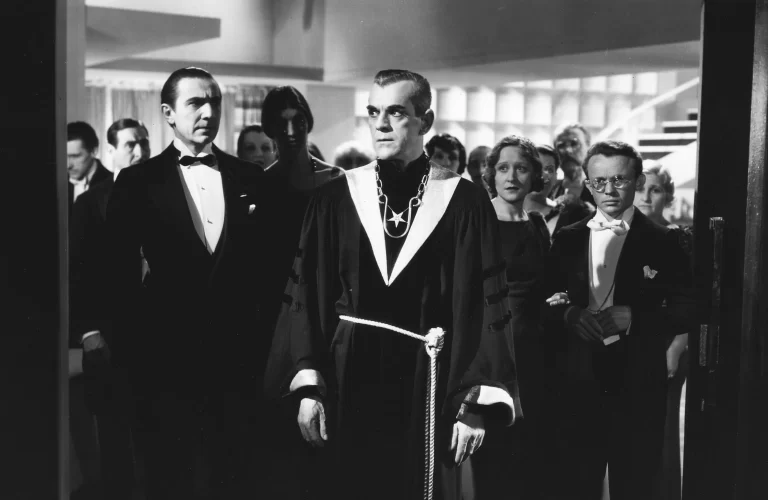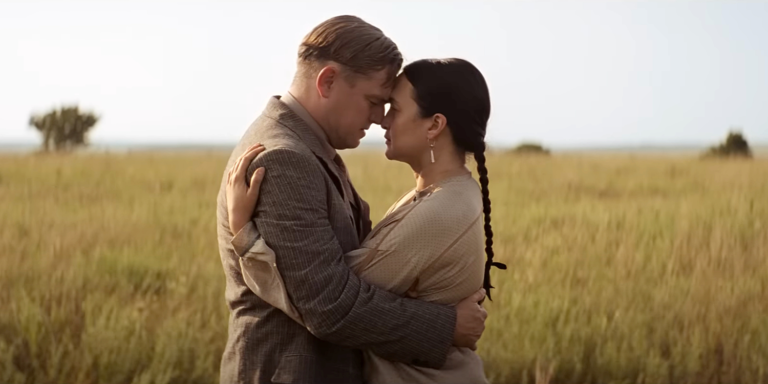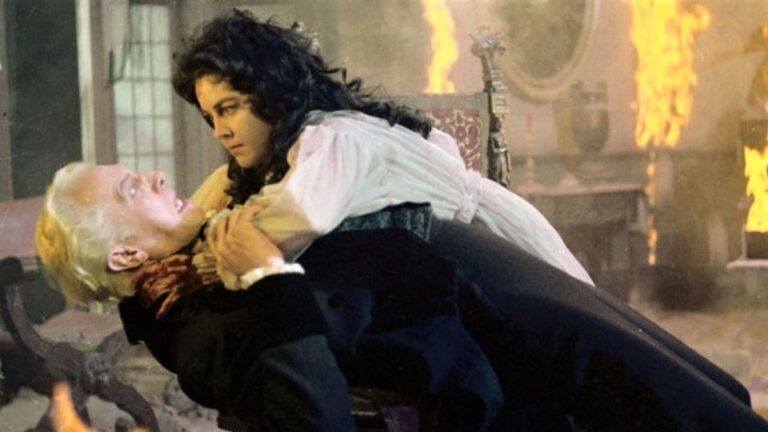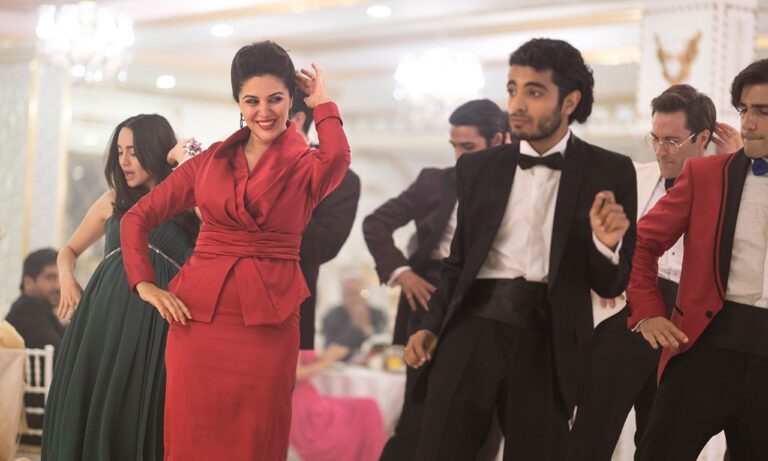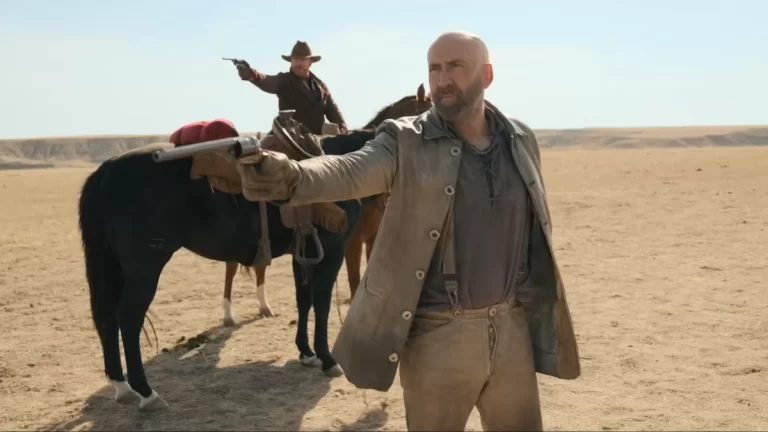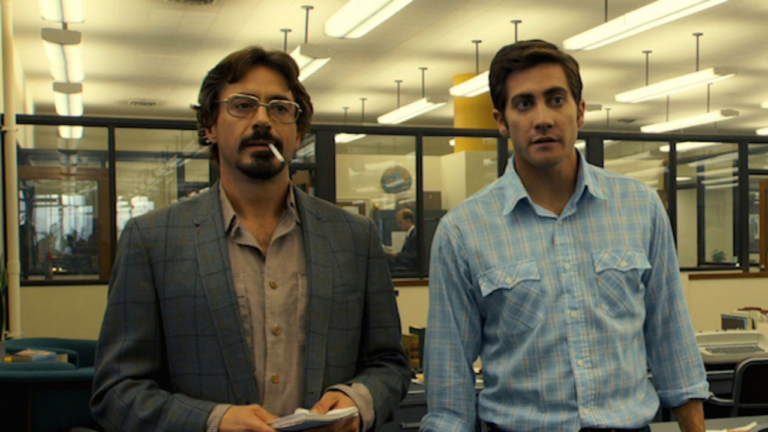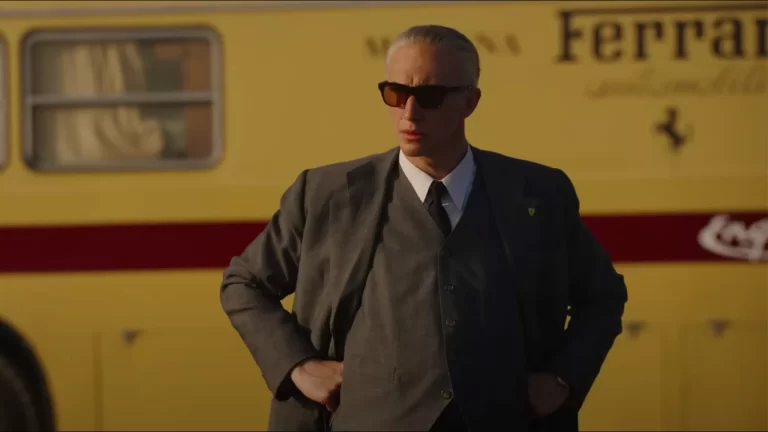Director: Aki Kaurismäki
Writer: Aki Kaurismäki
Stars: Alma Pöystim, Jussi Vatanen, Alina Tomnikov
Synopsis: In modern-day Helsinki, two lonely souls in search of love meet by chance in a karaoke bar. However, their path to happiness is beset by obstacles – from lost phone numbers to mistaken addresses, alcoholism, and a charming stray dog.
With a runtime barely going over 80 minutes, Aki Kaurismäki’s Fallen Leaves packs such an unbelievable amount of emotion into every sequence. It’s a deeply impressive display of economic filmmaking, but by no means does it seem to be a symptom of lack of care. On the contrary, Kaurismäki’s film goes for the most straight-forward approach possible, with maximum impact left in the aftermath. Knowing that his audience will likely relate to the larger themes of the film, Fallen Leaves uses none of its sparse runtime to really provide the audience with the ins and outs of his two lead characters. They’re practically the only characters in the film, and they feel so lived in in any given scene. Instead, through imagery and subtle performance alone, we come to painfully understand the plight of Ansa (Alma Pöysti) and Holappa (Jussi Vatanen). If you’re wondering just how that is, the answer is simple: many of us continue to live some version of it every day.
The film opens up drily capturing Ansa at work. With a melancholic expression, she scans various cheeses and dairy items on the shelf. We then follow her home, where she transfers from the couch, to the kitchen table, to the bathroom, and finally, to bed. Nothing is said vocally, but it’s in her subtle body language that all we need to know can be understood. As Ansa meanders through the cyclical nature of her daily life, it’s clear that this routine is one that has been set in stone for some time now. The only uprooting of that constancy is distinctly shown by what she hears on the radio. Practically whenever a radio is turned on in Fallen Leaves, we hear of nothing but breaking news from the war in Ukraine. With this bleak opening sequence, Kaurismäki’s film reminds us of how often we are surrounded by pain and sadness, both internally and externally. To be grateful for the lives we have been given is an honorable and necessary notion, but if they are full of such mundanity and tragedy, it becomes increasingly difficult with each passing day.
Fallen Leaves finds itself deeply interested in the idea of cyclical behavior, both in the form of routine-building, but also in reasoning. This all stems from a conversation Holappa has with his friend at a karaoke bar. He professes that he’s depressed because he drinks too much, but he also finds himself drinking to fight the depression he faces. Living on a job site with non-existent privacy, it’s clear that he too has no respite from the routine of life, except for the bit of solitude he has while his roommates go to bars. Luckily, it’s on a chance encounter that both Ansa and Holappa happen to notice one another in the few waking moments they have to exist beyond the scope of working to stay afloat. But like so many interactions we have in life, our characters find themselves more comfortable sipping their drinks than speaking to one another. It isn’t until Ansa finds herself unjustly fired from her job that the two meet again, on proper terms. Hoping to find comfort in the company of one another, they go to a local movie theater that, for cinephiles, looks like a true delight for a first date location. This is a rare scene of the film wherein the dead air is not filled with that of immense tragedy and war reports. Instead, it’s full of levity seemingly inspired from a Jim Jarmusch film. Even still, we barely see the two characters react. It’s in their deeply muted performances that provide the emotions which will shatter our hearts in the latter half of the film.
As the two grapple with the personal hardships they face, Kaurismäki begins utilizing the bare essentials of what is necessary. With two solitary images juxtaposed by a great match cut, the central theme propelling Fallen Leaves practically screams at the audience. This film has a really great layer of bone dry comedy on its surface, but in many ways, it almost feels like a put-on. That’s not written as a critique, but rather a likening to the notion that we oftentimes rely on humor to cover up a deeper sense of sadness within. So mentioning the comedic side of this film is solely to point out that while the film is humorous for most of the runtime, there are sequences throughout that will leave the audience gutted. With a simple shopping trip involving four or five items, Kaurismäki is able to paint such a vivid image of Ansa’s deepest beliefs that it’s truly remarkable. Loneliness, in its all-consuming nature, is deeply powerful. It often may feel impossible to rid ourselves of the notion. Yet every morning, as we wake up and find ourselves overwhelmed with a new barrage of tragedies, it may become more and more difficult to find reason to go on.
In a particularly stunning sequence during the final moments of the film, Kaurismäki brings his audience back to the karaoke bar. As the group onstage sings particularly bleak, although incredibly catchy, lyrics, the filmmaker cuts to individual listeners in the crowd. They all solemnly look to the stage, with drink in hand, and the film reveals perhaps its greatest trick. Each stranger we see is hopelessly alone, and at one point or another, many viewers may picture themselves within that same crowd. All the characters in the film are not Hollywood personas. It’s a film full of everyday people, each dealing with real problems and raw feelings that are deeply relatable. In a way, we are just as much characters of this film as anybody we see on screen. It’s only in the final moments of Fallen Leaves that Kaurismäki provides us with a semblance of hope. Even if it takes some time trekking through darkness, we will hopefully find a hand to take hold of and make it through to the other side. At the very least, even if the light seems miles, or decades, away, having somebody to walk alongside will make it a bit easier.



